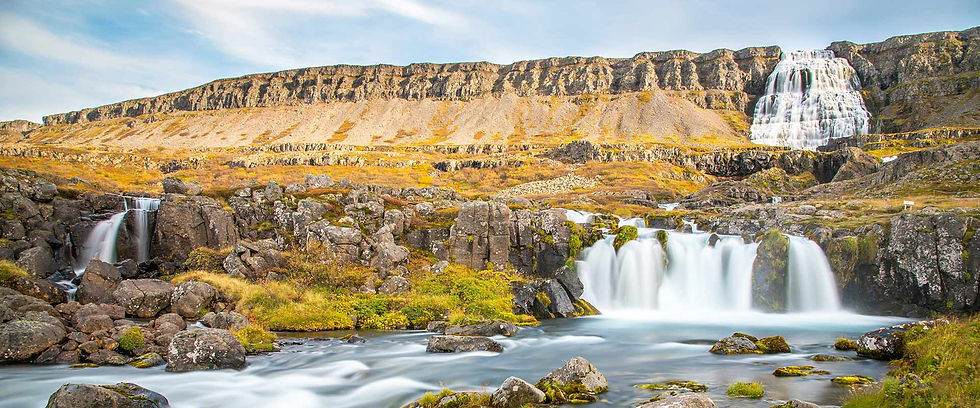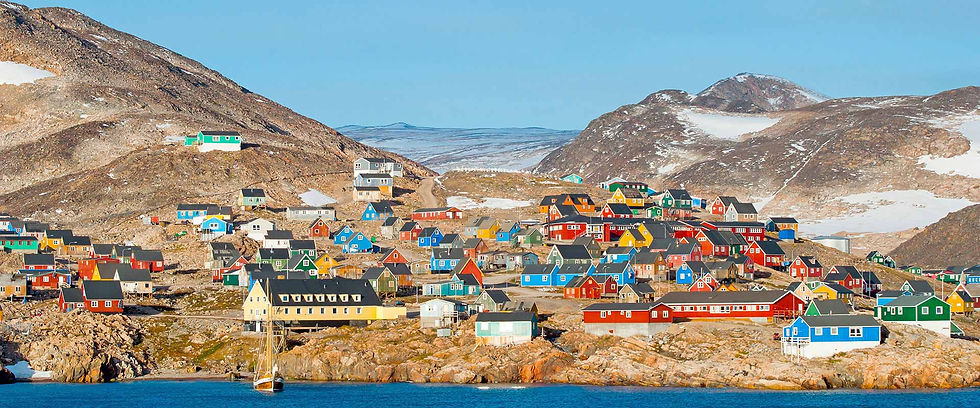Please click on 'Prices & Departures' tab for departure dates, cabin types and price details.
Day 1 Longyearbyen (Hotel Night)
At the Longyearbyen airport, you will be greeted by our staff and transferred to a quality hotel, which has been arranged by us and is included in the price of the itinerary. You will then be free to explore the charming, walkable town center.
Day 2: Welcome Aboard!
After breakfast at your hotel, the morning is yours to enjoy Longyearbyen.
In the afternoon, you will be transferred to the pier where we will warmly welcome you aboard the deluxe expedition vessel M/V Sea Spirit.
Day 3-5: Arctic adventures begin
The goal of this voyage is a circumnavigation of the Svalbard archipelago. We will make an attempt to go to the northeastern most part of the archipelago – the island of Kvitøya, famous for its polar bears. Along the way, we hope to experience the many facets of this incredible High Arctic territory.
Much of the pristine nature of Spitsbergen is protected by a system of national parks, and the first one on our way will be the Northwest Spitsbergen National Park, which is the crown jewel of Svalbard’s scenic wonders. This area is well-known for its deep fjords flanked by serrated mountain ranges and immense tidewater glaciers calving icebergs into turquoise waters. The skies are filled with millions of murres, guillemots and little auks, whose eggs are just now hatching at countless breeding colonies located on small islands, mountainsides and sea cliffs within the park. This is also a great chance to encounter marine mammals, including beluga whales and various Arctic seals.
Day 6: The Polar Ice Edge is straight ahead!
The Svalbard Archipelago is located halfway between the top of Norway and the North Pole, which means the Polar Ice Edge can be found to the north of the islands! This corner of Svalbard is full of stunning scenery and wildlife as well as rich history from the age of exploration. Our plan is to navigate along the ice edge towards the island of Nordaustlandet and further to the east towards Kvitøya (White Island). However, remember, our route and research opportunities are heavily dependent on the weather. But rest assured, we’ll take the best possible advantage of the circumstances presented to us by nature in this wild and remote corner of the world.
Day 7-8: Following the trails of great Arctic explorers
On this part of the journey, we will make an attempt to go to the eastern and northern regions of the Svalbard Archipelago – infrequently visited aboard expedition ships – experiencing the isolation and beautiful remoteness of Svalbard’s Arctic wilderness areas. Kvitøya (White Island) is one of the most rarely visited and closest islands to Franz Josef Land. This place, almost completely covered by ice, became the final resting place of the balloon expedition of the Swedish polar explorer Salomon August Andrée. Kvitøya is not always accessible to expedition ships, but it may provide another opportunity to observe polar bears in their natural habitat. Another impressive location in this area is Karl XII Öya, which is the northernmost part of Svalbard. Polar explorers Alfred Gabriel Nathorst and Adolf Erik Nordenskiöld visited this remote island in the 19th century, and if we are lucky enough, we will be able to follow their trails.
Day 9-10: Great wonders of the Arctic world
During this voyage, we expect to encounter significant sea ice concentrations in the enormous Northwest Svalbard Nature Reserve, which covers the rugged northwestern parts of Spitsbergen and the entirety of Nordaustlandet, the second largest island in Svalbard. In this remote and isolated region, ice can persist very late into the summer. The massive Austfonna ice cap rises above the stunning landscapes of the High Arctic. Part of it meets the sea along the 45-kilometer ice cliff known as Bråsvellbreen—one of the great wonders of the Arctic world. The polar desert environment supports little in the way of vegetation, but hosts a prodigious number of seabirds. The cliffs of Alkefjellet are home to thousands of pink-footed geese, glaucous gulls, little auks, black-guillemots, snow buntings and (probably) barnacle geese. Historically, this icy wilderness has proven a good location for spotting polar bear and walrus.
Day 11: The picture-perfect nature of Svalbard
The Southeast Svalbard Nature Reserve is a truly pristine and rarely visited wilderness containing hundreds of uninhabited islands. On the large islands of Edgeøya and Barentsøya, broad tundra valleys support the territory’s densest population of endemic Svalbard reindeer. The valleys are also important breeding areas for ground-nesting birds such as geese, eiders and sandpipers. Arctic foxes prowl the vast landscape, seeking to provide food for their young cubs, who are just now emerging from their dens. Shallow, murky seas are ideal feeding grounds for walruses resting in large numbers on gently sloping beaches. Historical sites throughout the islands provide glimpses into the region’s bygone era of trapping and hunting.
South Spitsbergen National Park is a vast region of varied landscapes, including polar deserts and impassible mountain ranges. The centerpiece of this park is Hornsund, a picture-perfect fjord where countless mighty glaciers cascade from soaring mountaintops into icy inlets. The park also includes the southern shores of Bellsund, a picturesque bay where the remains of historical whaling operations can be found, including wooden boats, cabins and thousands of whale bones — a scene from the distant past, literally frozen in time. Throughout the park, there is always a high probability of wildlife sightings. Wildflowers will be at their peak during this time.
Because of its extended length, this ambitious and in-depth Svalbard circumnavigation expedition cruise is a great chance to get a comprehensive view of the Arctic’s many faces. Every day offers something new and exciting. We will not miss a single opportunity to encounter amazing Arctic wildlife, witness incredible polar scenery and walk in the footsteps of historic expeditions
Day 12 -13: Back to the West Coast
Our circumnavigation of the Svalbard archipelago is coming to an end. We are back to the West Coast of the Spitsbergen archipelago, with its beautiful locations like Alkhornet Mountain (which is also known as bird heaven because its cliffs support over 10,000 breeding pairs of seabirds).
Day 14: Disembarkation in Longyearbyen, Svalbard
After filling up with one last buffet breakfast on board, we bid you farewell in Longyearbyen. We provide transfers to the airport or to the town center in case you plan to stay longer in Svalbard. By this time, you may already be making plans for your next amazing trip with us into the polar worlds!
































